9 Middlegame Concepts You Must Know
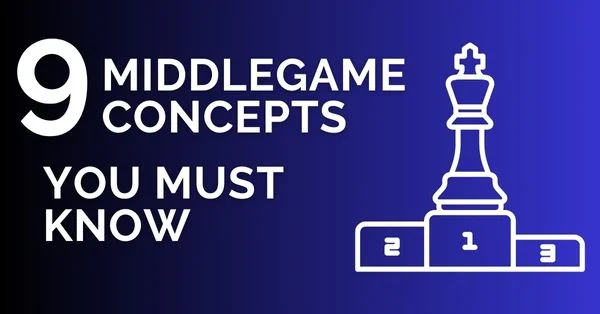
Middlegame concepts rise in importance as a player grows in strength. How a player plays the Middlegame and Endgame directly correlates to their strength as a chess player. But learning the middlegame can be overwhelming as there are infinite possible interactions between the pieces.
What we can do is we can break it down into chunks or ‘concepts’ and master them one by one. In the article, we will take a look at 9 Middlegame concepts that all chess players must know.
1. Pawn Structure
Pawn Structure more often than not determines the nature and direction of play. There are multitudes of pawn structures in chess. We must know in depth about all the pawn structures that arise out of our openings. We can classify the central pawn structure into the following types.
Fixed Pawn Centre: This structure gives a maneuvering game where both players move their pieces to optimum positions.
Closed Pawn Centre: The play is on the flanks as the center is blocked by pawn chains.
Mobile Pawn Centre: This is rarely seen but the players with the Mobile pawn center should use the space advantage and limit the opponent’s pieces.
Dynamic Pawn Centre: This type of pawn center can transform into any of the ones mentioned above.
There are also various standard pawn structures like the Hanging pawns. Isolated pawn and opening specific pawn structures like the Carlsbad structure that arises from the QGD or the Boleslavsky Pawn structure in the Sicilian.
It is important to study the typical plans and tactical motifs that arise out of that particular pawn structure.
2. Development
This is our priority when playing the opening stage of the game. The optimal scenario is where one develops but also simultaneously hinders opponents’ development. Also, remember that a lead in development is a temporary advantage. If you don’t use it immediately or transform it into another advantage it will vanish.
You can read about the most important middlegame principles and learn to apply them in your games.
The three common root causes of a lack of development are the following:
- Developing in a disharmonious way. Usually by neglecting one or other wing.
- A greedy capture of material takes away the time required to develop other pieces.
- Executing careless exchanges that put the opponent in the lead.
Let’s take an example for the first point. Developing is not just about bringing pieces out. It’s to do it harmoniously.
3. Control of the Center
The center is one of the most important factors in a position. They guide the course of play in a majority of positions. Many players think about the center in the opening stage but this thought takes a backseat when the middlegame is reached. A player who has a strong hold over the center is in the driver’s seat more often than not.
So how should we approach controlling the center? The most optimum way is through pawns. This is because pawns limit the mobility of your opponent’s pieces and also if pawns are controlling the center, then it leaves other pieces to perform more effective functions.
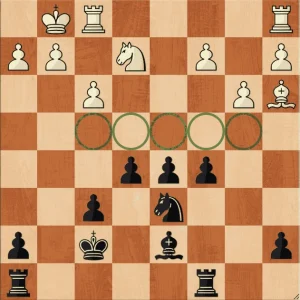
Observe how the black’s pawn limits the white’s pieces from getting coordinated. Black can play on both wings and slowly grind down their opponent.
5. King Safety
In the Romantic Era of Chess players went for each other’s throats by whatever means possible. This included giving up material for a lead in development or getting a defender out of position. With time players came to recognize the importance of King Safety. Various principles were developed to help guide a player to keep his king safe.
Therefore, in the Opening and Middlegame, King Safety should be on the top of your list when you evaluate a position. Let’s take a look at a scenario where the opponent’s king is stuck in the center.
In the following position, it’s White to Play. Give a few minutes of thought.
How would you proceed?
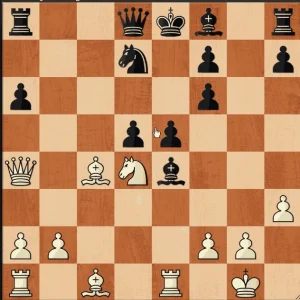
The bishop on c4 and the knight are attacked, did you want to retreat them? Here we have a lead in development therefore we should immediately look for ways to open the position and go for their king!
5. Initiative
Having initiative means being able to create threats that throw your opponent off guard. Possession of the initiative means that the player making the move can put their ideas into action or employ tactical motifs. Creating threats at will is very unsettling for the opponent because they must calculate the consequences of the opponent’s move at every move.
This is especially important at the club level, where defensive technique is not as well developed as it is among the masters, and players generally crumble when confronted with active aggressive play.
As a result, we must work on developing our sense of when we can seize the initiative and push our opponent back.
The two common ways to gain the initiative are:
- By ignoring our opponent’s threat by posing an equal or greater threat.
- By sacrificing material to create long-term threats or to significantly improve the activity of our remaining pieces.
6. The Attack
Attacking in chess is not just creating one-move threats. Attacking is an art that must be honed through experience and acquiring knowledge. One of the most crucial aspects to remember when attacking is to have a target to attack. Without a concrete target, the attack will fail.
The target could be anything from a weak square to a misplaced piece. The skill to develop an attack coherently with a target in mind will only come through practice and training.
In the following game, we see the fierce Frank Marshall wrecking Black’s King. Observe how Marshall directs his pieces toward the target and what role the pawns play in the attack.
Also, it’s smart to have a quick look to see if an impending attack will succeed or not. You can use the following rule of thumb.
Quick Tip to check if an attack will succeed: The number of attackers should exceed the number of defenders. The optimum ratio is 2:1 i.e., there should be two attackers for every defender.
7. The Defense
In Chess, Defending is a very interesting aspect. It is multi-dimensional and plays a vital role in saving games. It can take many forms like Counterplay, Risk Management, Sacrifice, prophylaxis, and even Desperado!
In the following position, it is Black to Move. Take a few minutes to think about how would you proceed. White is on the offensive so how to continue?
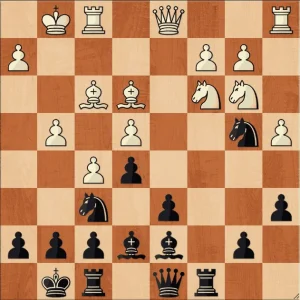
The threat is g4-g5. How to deal with this?
So, following the classical principle, the first thought that comes to mind is that a flank attack should be answered with a counter in the center. Therefore, we calculate d5, but after exd5 e4 white simply plays Bg2.
Is it time to panic then? Not really. Let’s look at some alternatives. Let’s try to anticipate white (also called Prophylaxis). We can retreat with Ne8. The idea is to play Bg5 and take control of g5 and dark squares. Looks good, so should we stop our calculation here?
Whenever defending we must always try to look that one move ahead than our opponent and see how they can play against our idea. Here white can play Qd2 after Ne8 and it stops Bg5 and also prepares to push g5.
The only surprising defensive resource that Black has is the dogma-breaking h5! The idea is that if g5 then Ng4! Bxg4 and Bxg5 and the tactic work out in Black’s favor.
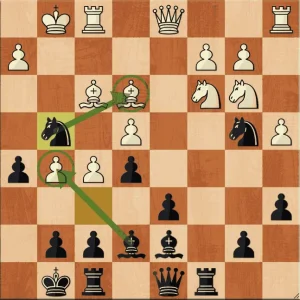
Hence remember that rules are not absolute in chess. We must keep an open mind towards chess and especially during the defense. Who knows you might even discover a superb defensive idea!
8. The transition from Middlegame to Endgame
One of the most effective ways of realizing an advantage is through transforming the position to a favorable endgame from the middlegame. This is also called ‘Trading down’.
The right moment of when to transition only comes about through experience. Many players are afraid of the endgame and continue to press for a winning shot in the middlegame when they can transition to a favorable endgame. Such an approach can easily misfire.
This skill can be trained during middlegame study itself. At regular intervals always ask yourself what endgames are favorable to me and what endgames are inferior. This directly correlates to the pieces you keep on the board or exchange off.
Also, another factor is the pawn structure. The pawn structure becomes very important during endgames and play generally involves weak pawns and mobile pawns.
9. Tactics
If Strategy is the building block of a Middlegame then Tactics are the glue that binds them together. Most of the time it’s impossible to realize a positional plan without considering all the tactical possibilities in the position.
One habit you can develop is that on your opponent’s turn, you can think about all the tactical possibilities in the position for both you and your opponent.
Let’s take a simple example,
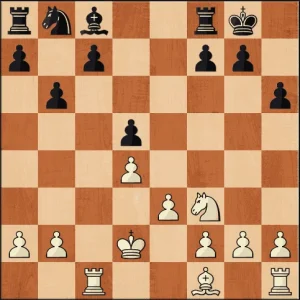
It is black to move. So, if your opponent is thinking you can make some quick mental notes like
The c7 pawn is hanging, the d5 pawn is undefended the Rook on a8 is undefended and is on an open diagonal, My knight can jump to d7 and maybe a double attack. Well for me just the b2 and f2 pawns are undefended.
Even though there are no immediate consequences of these points, it helps you be tactically aware and pounce on them whenever the opportunity arises.
FAQ
What are the tips for the middle game?
Always make sure that your moves achieve something in the middle game. Planless play can be dangerous. Also, try to prevent the opponent’s plan if possible.
What is the difference between middlegame and endgame?
The middlegame is characterized by the presence of most of the pieces and pawns. Due to the presence of the major pieces the king is not safe and hence cannot venture out to support its pieces in the endgame, the opposite is true.
How do you master middlegame?
You can master the middlegame by learning various concepts of the middlegame eg. King Safety, Pawn Structure, Planning, Attack, etc. It is also important to study master games as they will guide you on how to play certain middlegames.
What is the middle game principle?
There is no universal middlegame principle. But fundamentally what you should be doing is to improve your pieces as much as possible and limit your opponent’s pieces. This is because when the time comes to attack the king your pieces will be better.
What is the hardest part of chess?
The hardest moves in chess are backward piece moves. These moves are not intuitive at first sight as most players equate moving backwards to back down. This is not true, you can imagine them as a springboard, you go down to progress even further up.
How to Improve in Chess?
This is the number one most common question we get.
If you are rated under 2000, here are the 5 ways to improve at chess.



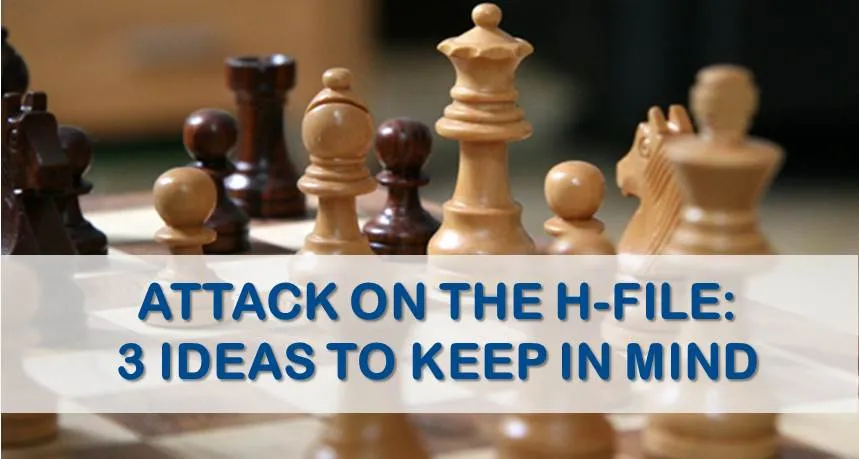
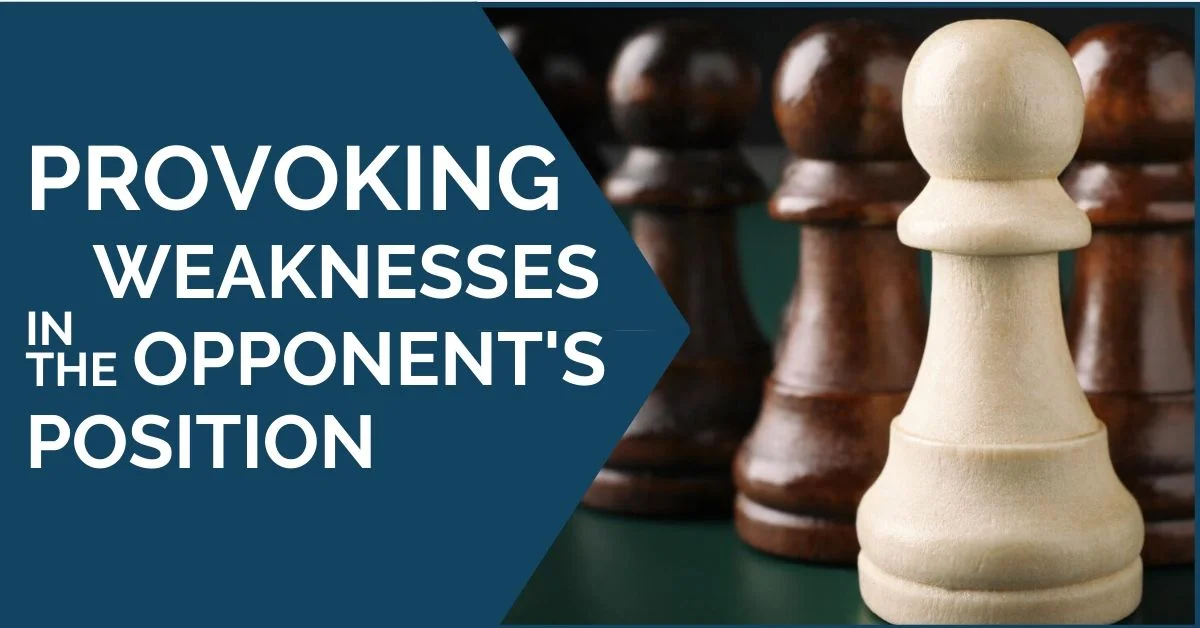
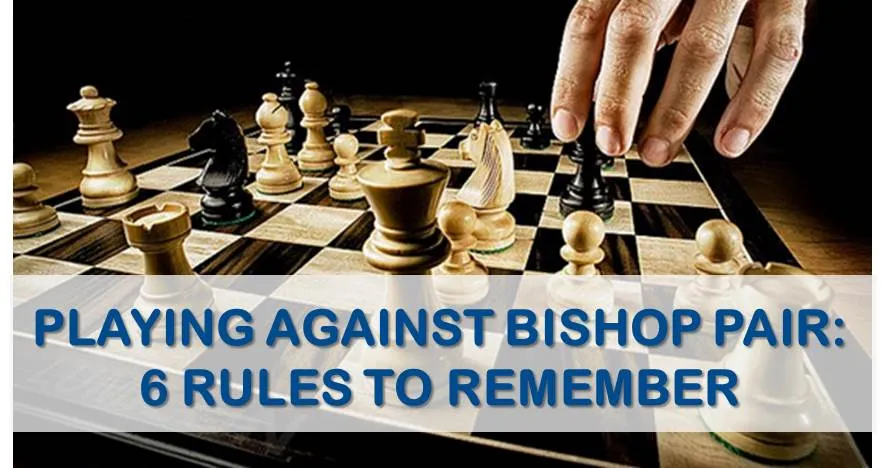




Comments: